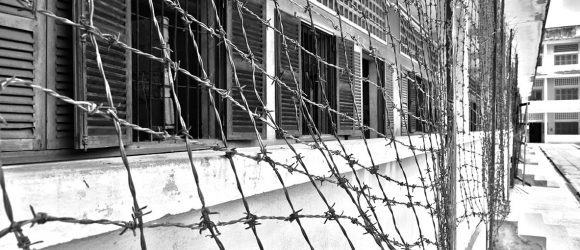
Throughout history, it has been the inaction of those who could have acted; the indifference of those who should have known better; the silence of the voice of justice when it mattered most; that has made it possible for evil to triumph. – Haile Selassie
When I crossed the border to Cambodia , it was hard not to think about what had happened here in the late 70’s …
The Khmer Rouge, led by Pol Pot – also called “Brother No. 1” – started a cruel “experiment” by creating a purely agrarian-based Communist society. Speaker of the Red Khmer announced the beginning of a new revolutionary era in which every form of oppression and tyranny would be abolished. However, within the first months of this revolutionary era the country was transformed into a giant labor and prison camp.
In power, the Khmer Rouge carried out a radical program that included isolating the country from foreign influence, closing schools, hospitals and factories, abolishing banking, finance and currency, outlawing all religions, confiscating all private property and relocating people from urban areas to collective farms where forced labour was widespread.
Money was abolished, books were burned, teachers, merchants, and almost the entire intellectual elite of the country were murdered, to make the agricultural communism, as Pol Pot envisioned it, a reality.
During their four years in power, the Khmer Rouge overworked and starved the population. At the same time the regime executed selected groups who they believed to be enemies of the state, spies or to have the potential to undermine the new state. People who they perceived to be intellectuals or even those that had stereotypical signs of learning, such as glasses, would be killed. Almost a third of the country’s population died between 1975 and 1979, perhaps half of those deaths being due to executions, the rest from starvation and diseases.
Tuol Sleng in Phnom Penh, also known as S-21, was once a high school. Under the cruel regime of the Khmer Rouge, the place became one of the most secret and darkest torture centers in their merciless system. Classrooms turned into gloomy places of hopelessness. Not individual suspects were arrested, but entire families. No one should be able to take revenge. Tuol Sleng was only one of at least 150 execution centers in the country.
More than 20,000 prisoners passed through S-21. Less than 35 survived the place. Those who did not die of torture, were murdered at the Killing Fields outside the city. In order to save ammunition, the prisoners were not shot but hit with iron bars or axes. Children were hit against trees until they were dead. Today, the excavated mass graves are clearly visible. However, sometimes heavy rain still washes clothes and bones out of the ground …
Given the sickening fact that all this happened end of the 70’s, I wonder if we will ever learn from the crimes of the past or if they simple serve as blueprints for the future.
To say you have no choice is to relieve yourself of responsibility.
– Patrick Ness
.